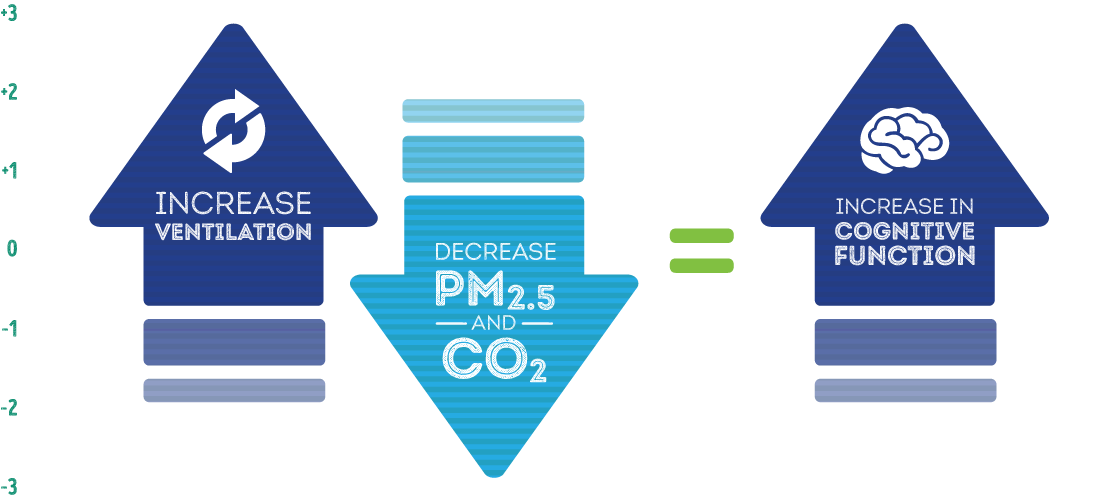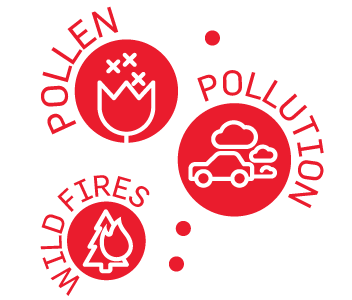There is a direct relationship between ventilation rates and cognitive function, as ventilation impacts levels of PM2.5 and CO2 exposure. For each decrease in the levels of exposure, there will be an increase in cognitive function.



There is no point at which cognitive function is not affected by indoor air pollution. Cognitive function can be improved even in buildings operating at the industry standard of 1,000 ppm by increasing ventilation, which lowers PM2.5 and CO2 exposure.

The study concluded that there is a direct relationship between the level of PM2.5 and CO2 exposure and the impact on cognitive function. For every decrease in the levels of exposure through ventilation and filtration, there will be an equal increase in cognitive function.

Improved indoor air quality can enhance cognitive function and health, improving occupants'ability to think and solve problems, while protecting them from the harmful effects of indoor pollution.
Even small effects on cognitive function and health can translate into substantial short- and long-term benefits. When you consider that 90 percent of the costs in a building are associated with the people inside – including salaries and benefits – the ability to improve cognitive performance and reduce infectious disease transmission, sick building symptoms and missed workdays through improved indoor air quality is powerful.
Ventilation refers to the rate of air exchange in buildings. Ventilation rates can impact the concentration of CO2 and other common gases.
PM2.5 refers to tiny particles in the air. They can can travel deep into your respiratory tract, impacting your health and cognitive function.


Results across the COGfx studies show that, with the right strategies in place, buildings can play a significant role in improving cognitive function, health and productivity while delivering bottom line benefits to businesses and health benefits to society. These findings were proven over time in the lab, across the United States and in buildings around the world.